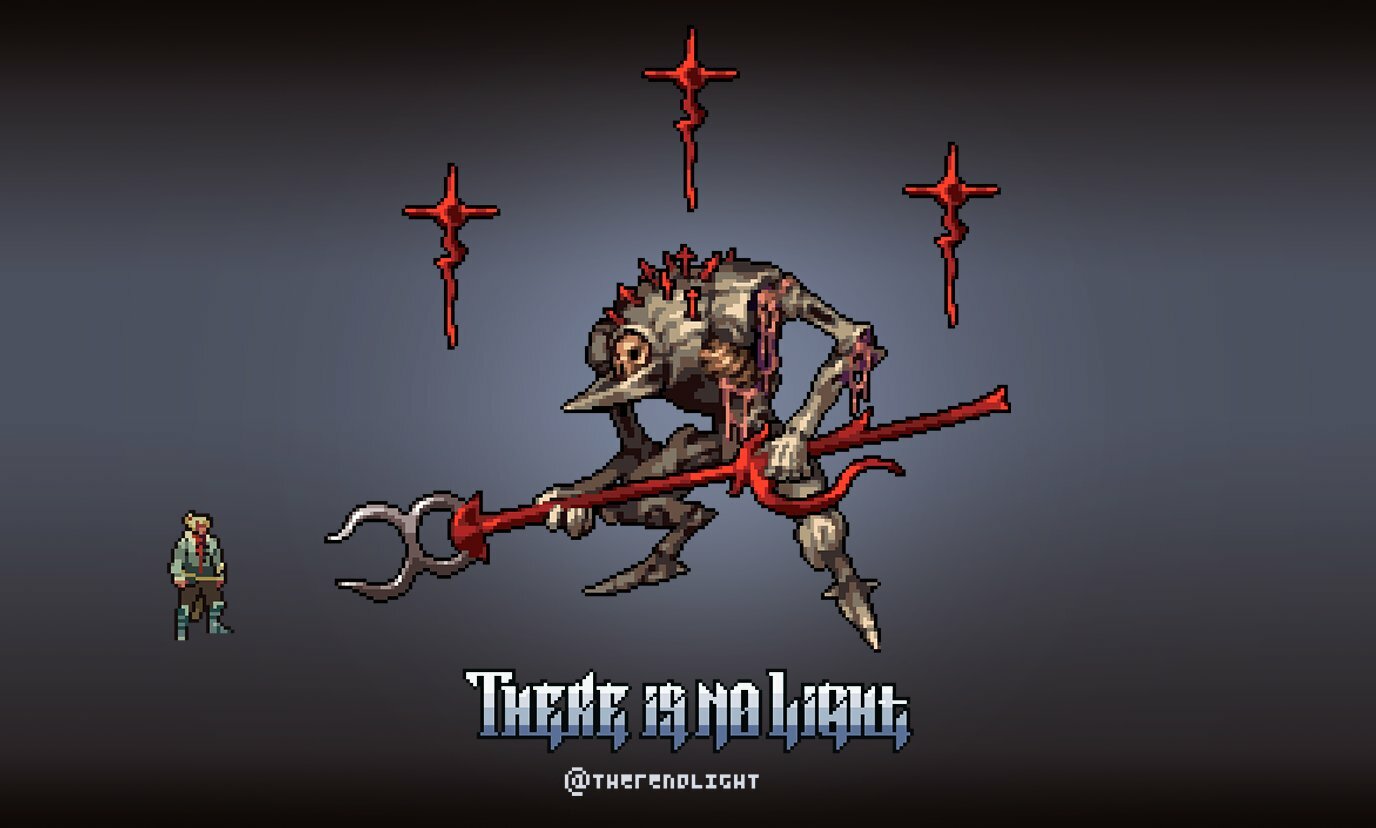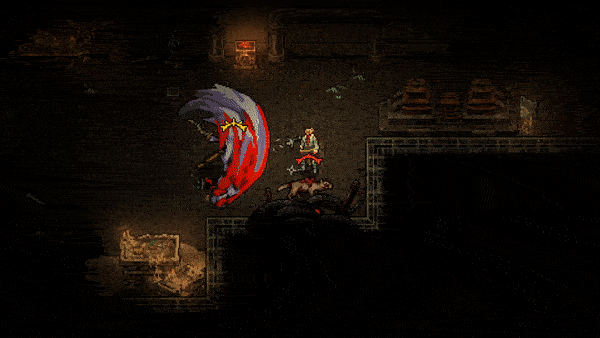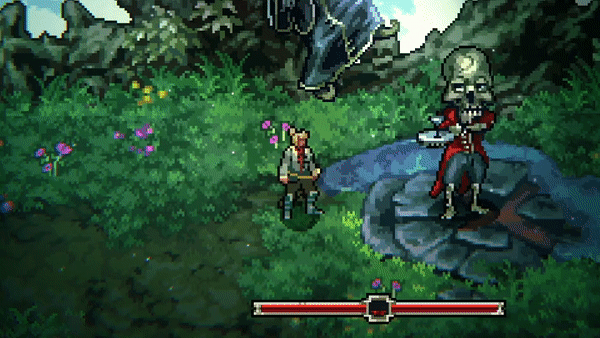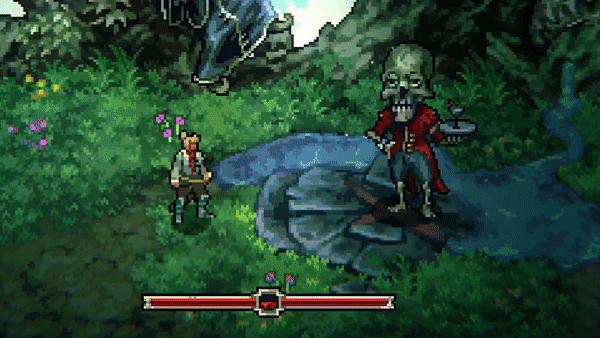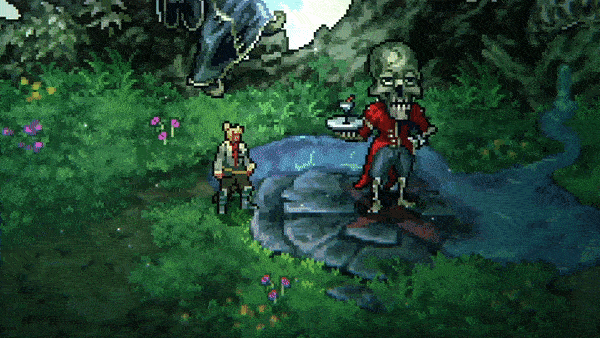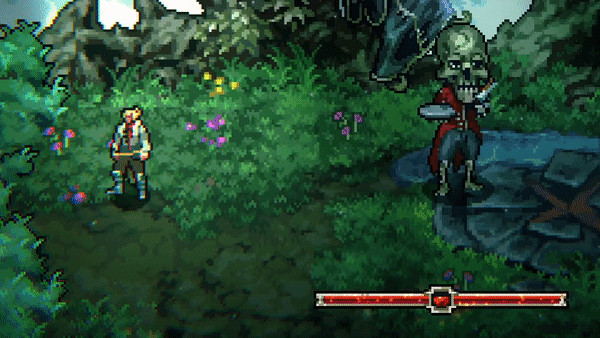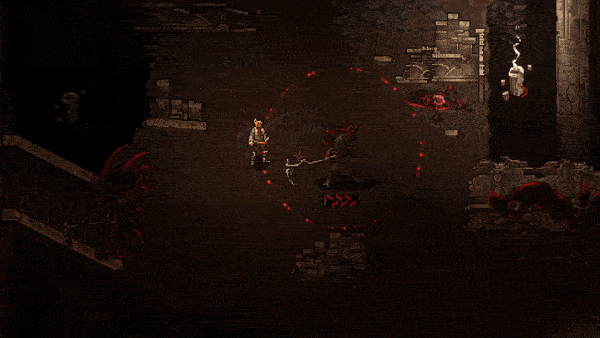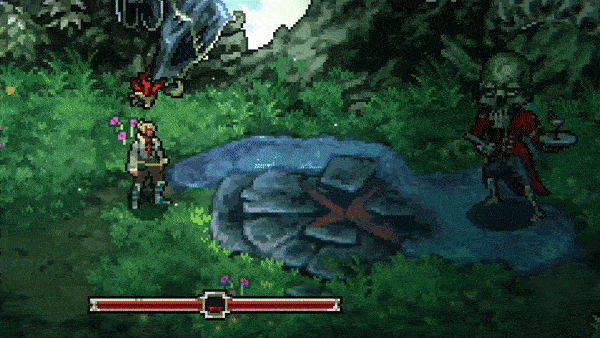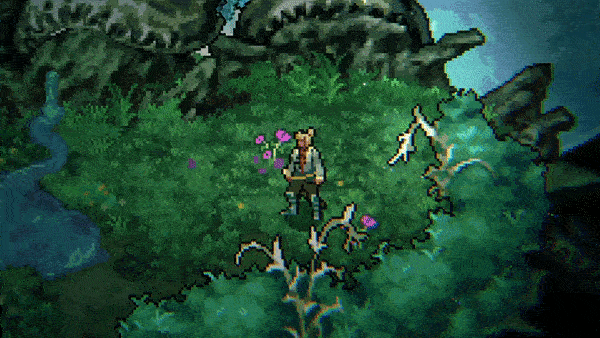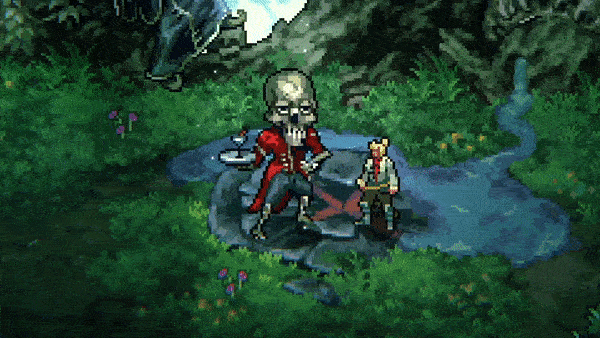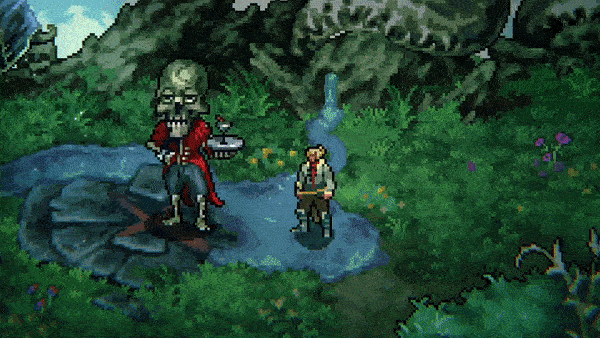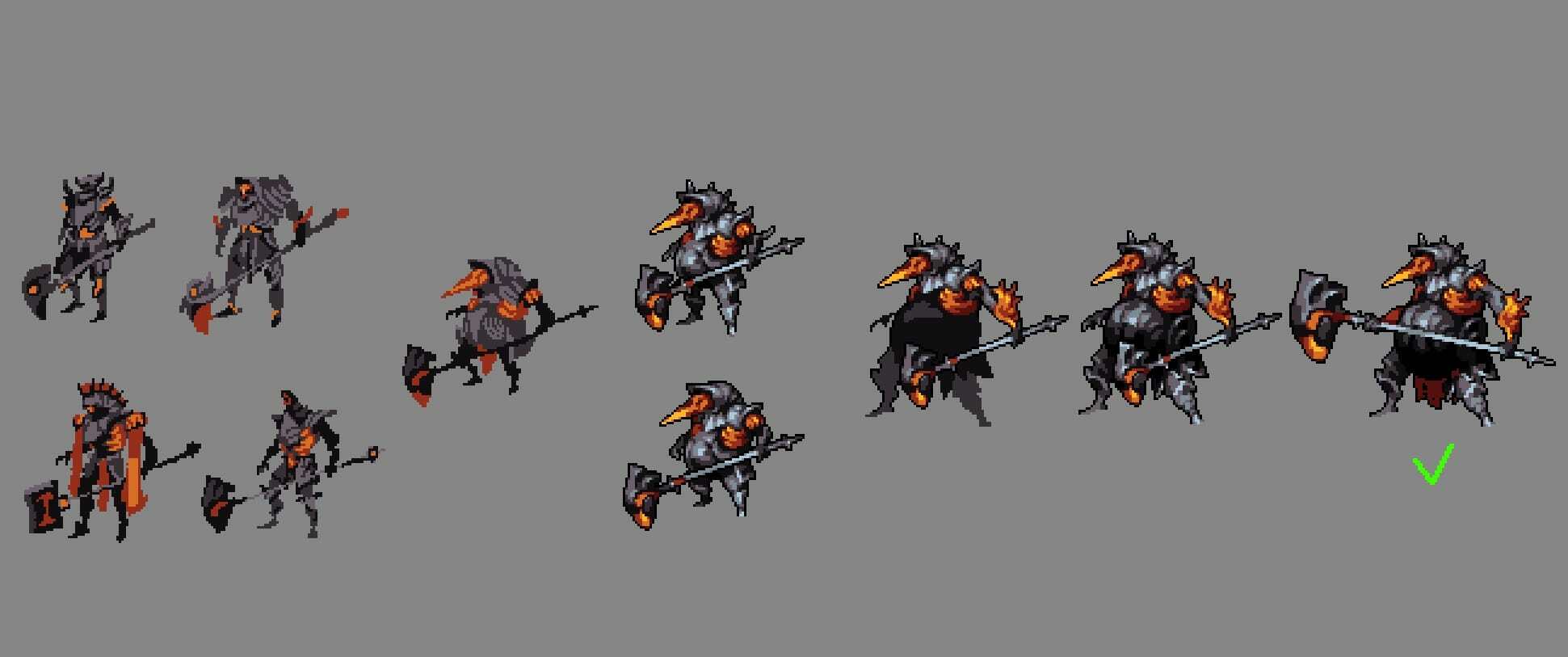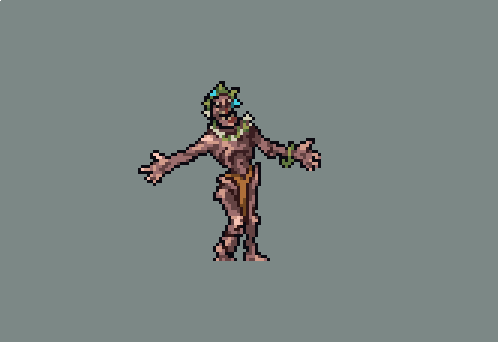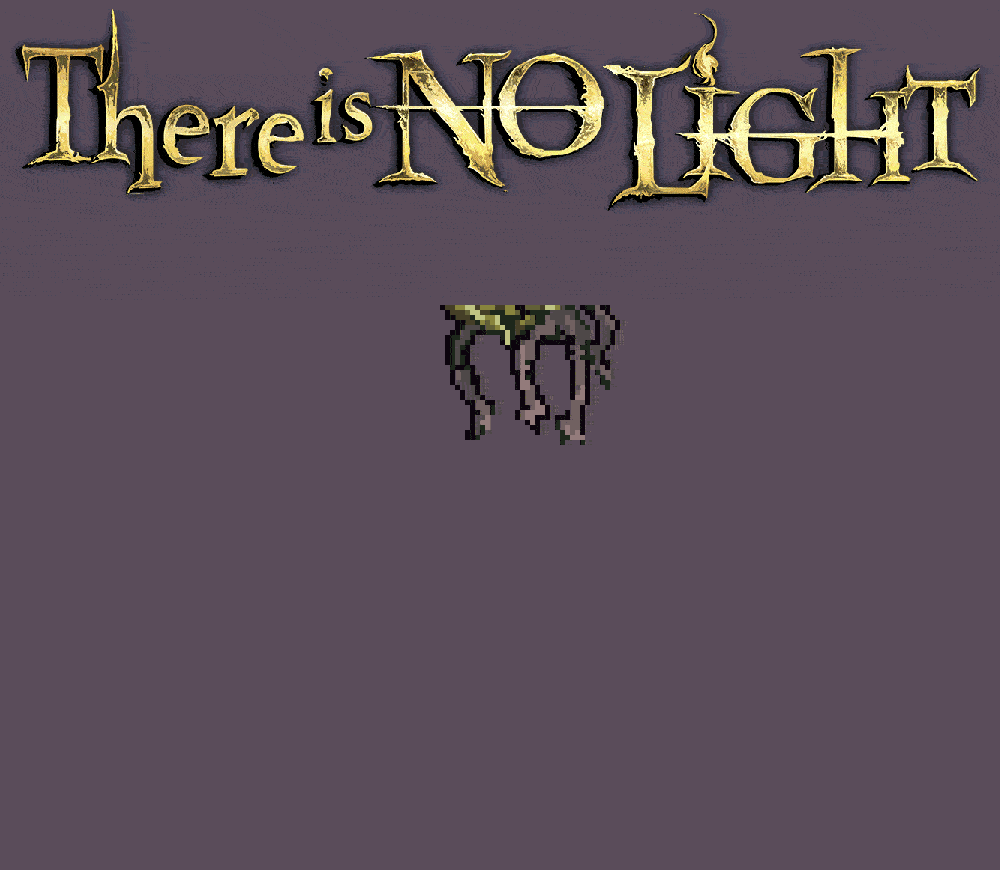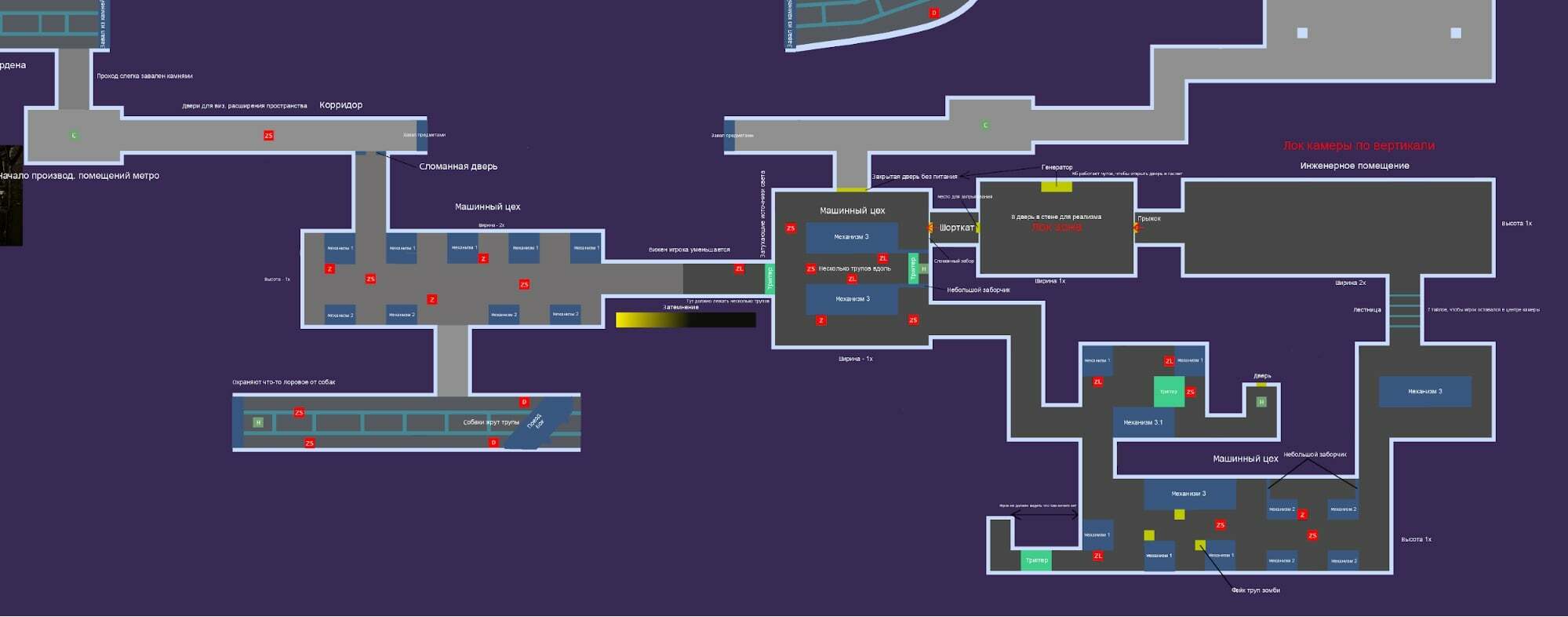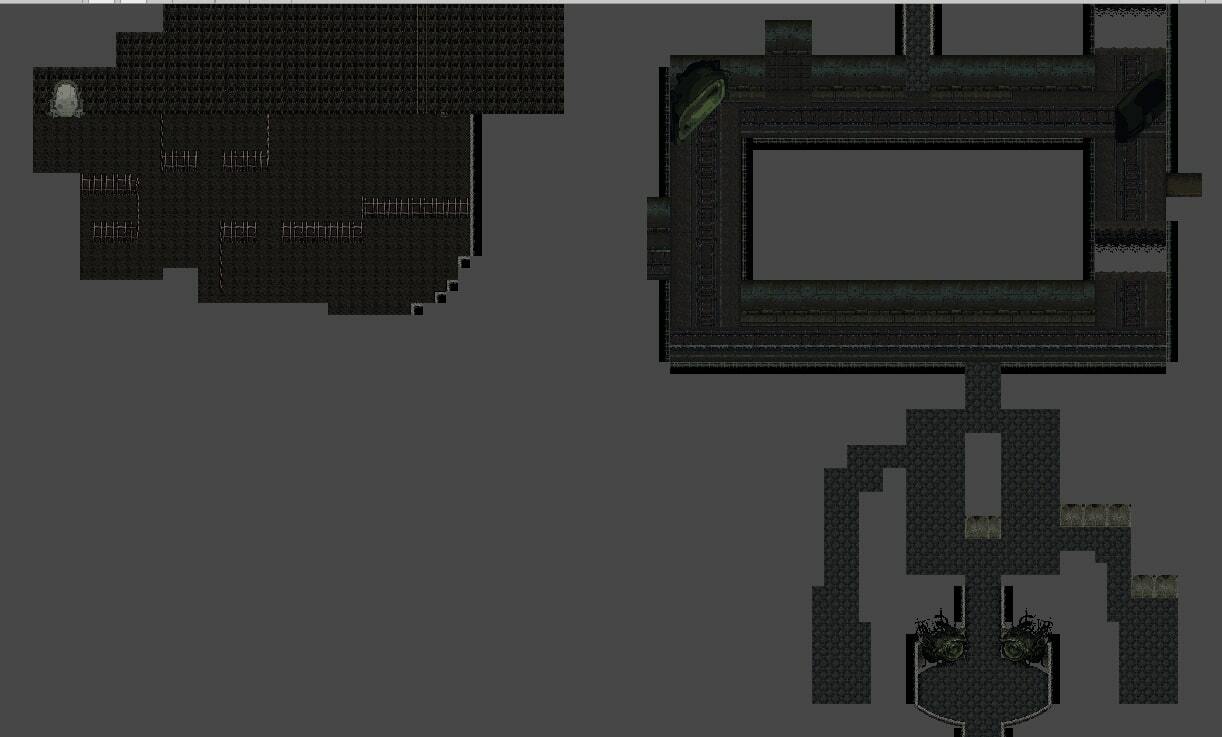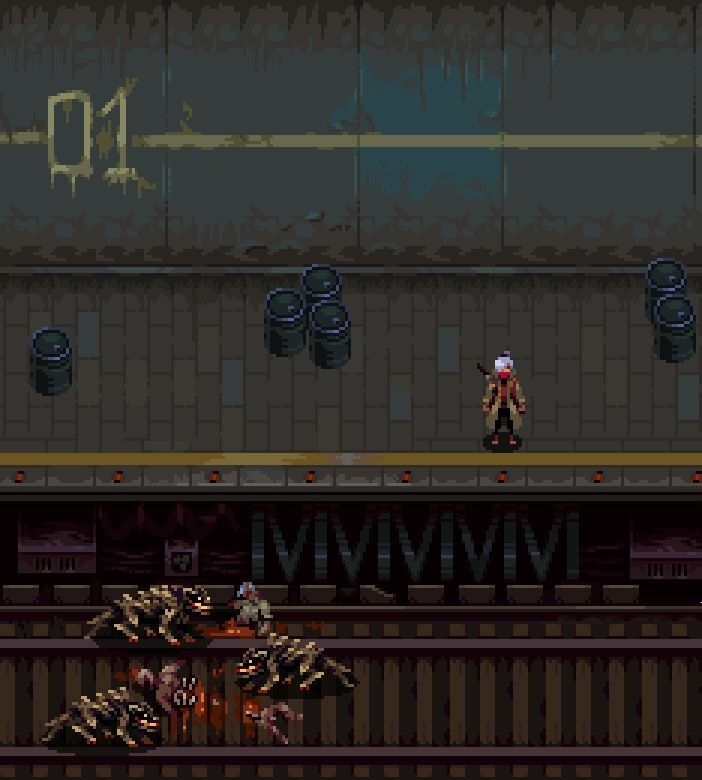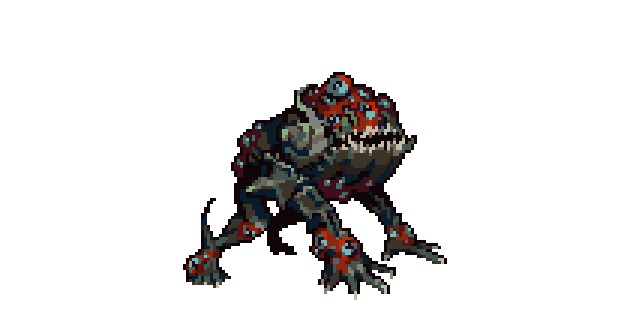Environment Design of There is No Light
Greetings! Our today's update is dedicated to our unique approach to environment and character design. This update is divided into two parts, so follow for more!
Art Direction
Initially, we thought that pixel art was easier to make. But over time and with the arrival of new artists to the team, we have realized it was a mistake that most developers make nowadays. The production of modern pixel art is no simpler and cheaper than the production of any other art.
When developing sprites, we do not use a pre-defined color palette, but if the asset that needs to be drawn has a material similar to an existing one, we either use the same colors or something close in tone and shade.
The most important thing about There Is No Light art is variety and freedom. We have more than 15 locations, which are divided into 4 directions that have their own unique styles, moods, and gameplay. Each sprite goes through several iterations until it matches the gameplay or environment it is in.
When designing bosses and mobs, we are also trying to create as much variety as possible. At one point, you may encounter Frontier's insane but amusing cannibals.
At the same time, at the other end of the dungeon, you will stumble upon a convoy with grotesque entities capturing lost people.
Level Design
Each level is based on its lore. Before designing the environment and characters, we create a lore document for each location that describes what is happening here.
When the lore document is ready, we draw a rough level layout that gives us an idea about the geometry and the surroundings of certain mobs. At this stage, we also distribute lore areas and create special level features that must be used when making the level in the game engine. Such a workflow, combined with a lore document, helps artists better understand the environment at the very initial stage of its production and reduce the amount of unnecessary art they will produce.
Next, the level is passed on to the artists to draw the first, roughest version of the environment, mobs, and characters. At this stage, we check how the assets work together, whether they are easy to read and do not blend with each other. Then we create the first blockout of the level in the game engine and test the behavior of mobs.
After that, the level goes through many iterations, in which the narrative and sound are added, and the tempo of the level is formed. The final level is always very different from its original draft. After achieving the required result, we let somebody outside the development team play the level in order to get feedback.









